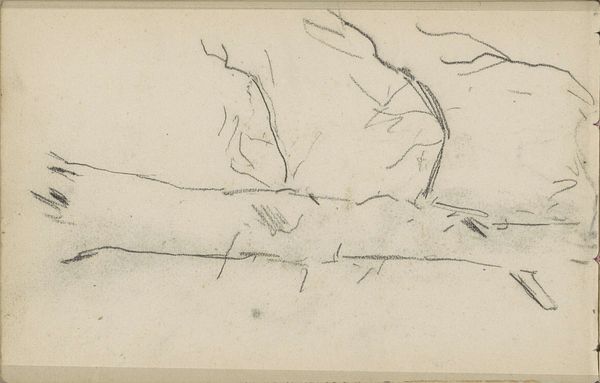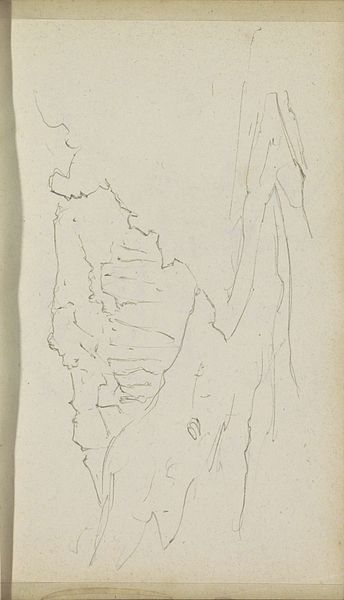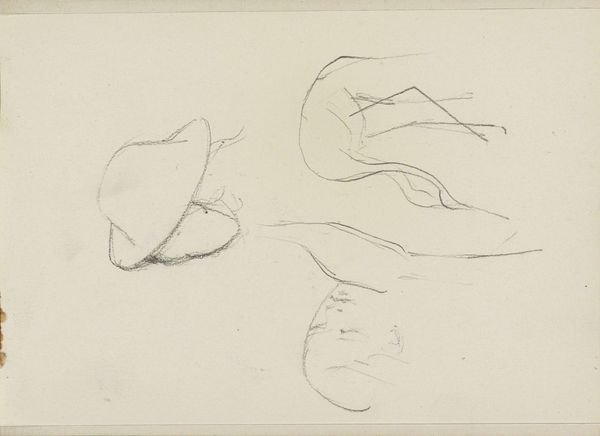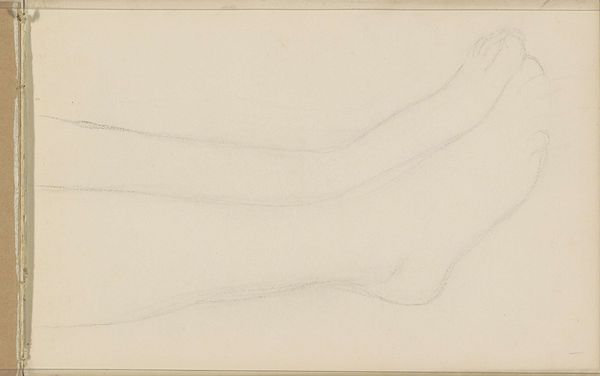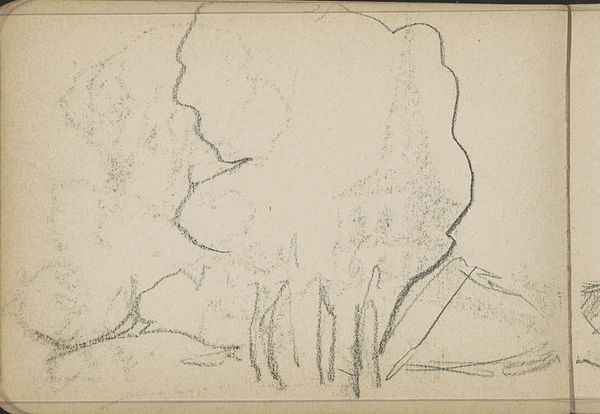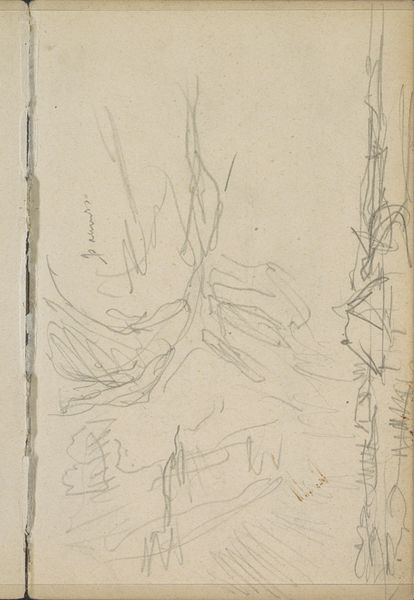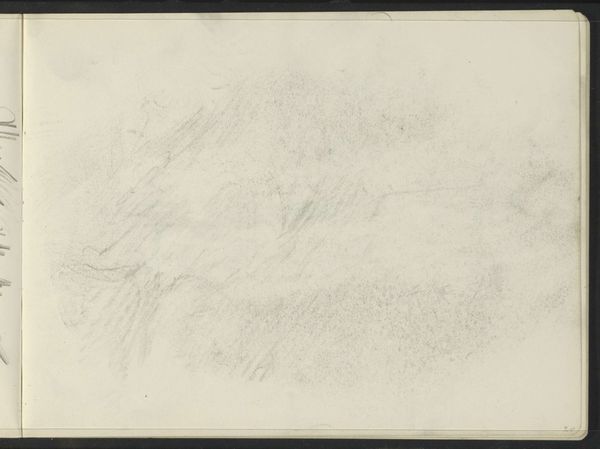
drawing, paper, pencil
#
drawing
#
impressionism
#
pencil sketch
#
landscape
#
paper
#
sketch
#
pencil
#
line
Copyright: Rijks Museum: Open Domain
Curator: This pencil drawing is titled "Bomen," which simply translates to "Trees," and was created by Jozef Israëls sometime between 1834 and 1911. You can find it here at the Rijksmuseum. Editor: Immediately, the rawness strikes me. The lines are so delicate, almost tentative, yet they convey a sense of towering, silent presence. There's a real stark beauty in its simplicity. Curator: Israëls was known for his depictions of peasant life and landscapes, often focusing on themes of poverty and resilience. While this drawing isn't as overtly political, I think it still reflects a connection to the natural world and, perhaps, a comment on the resources that were available for making art, that these humble means carry just as much meaning. Editor: Interesting perspective. I see the lines as being less about conveying hardship and more about capturing the essence of the trees' form. The artist seems primarily concerned with the structure and the way light might play across the trunks, despite the lack of color. It is an aesthetic exercise, a way of visually understanding this landscape. Curator: But doesn’t the medium itself, a simple pencil on paper, speak to a certain economic reality? Fine art supplies, were available, of course, but were reserved for more formal pieces that could provide economic return. I mean, there's an intimacy and a directness that comes from using readily available, perhaps even discarded materials. Editor: Possibly, but look at the deliberate layering of the pencil strokes, and the varied pressure creates depth, and a sense of texture, I think that even without any material wealth to bare, Israëls focused less on economics and more on composition—he transforms an ordinary study into something quite ethereal, transcendent even. Curator: And who had access to see, value and collect these more intimate impressions by Israëls, and how does it speak to his larger artmaking economy at the time. It certainly makes one think of this drawings journey to the institution. Editor: Ultimately, this image is something raw and affecting. There’s a lot that the image suggests regarding landscapes that seem quite intentional to me as a formalist. Curator: For me, the artwork speaks of the resources accessible at the time, with this minimal toolkit of pencil and paper speaking of the humble position in which Israëls could produce works like these.
Comments
No comments
Be the first to comment and join the conversation on the ultimate creative platform.
